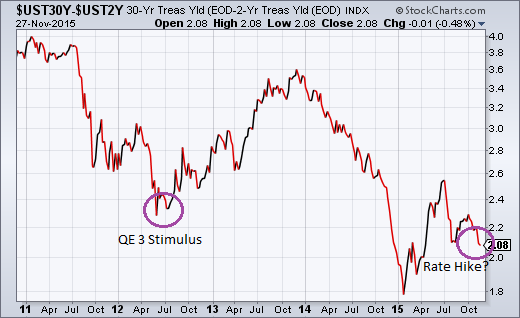Everyone has a guilty pleasure or three. Mine? I am addicted to Seth MacFarlane’s “Family Guy.” I cannot get enough of outrageously random references on everything from a pizza place’s version of a salad to writers plying their trade at Starbucks. Underneath it all are characters whose comments are outlandish and whose behaviors are impetuous or harebrained.
This morning, a particular exchange in a Family Guy episode is stuck in my head. Peter Griffin is blackmailing his father-in-law about an extra-marital affair. As part of the extortion, Peter requires the father-in-law to produce a list of exceptional catch-phrases. (Peter wants his own catch-phrase attributable to him.) One of the catch-phrases that he admires is as inane as it is nonsensical. “On your mark. Get set. Terrible.”
Why is this scene playing on a loop in my head right now? Perhaps it has to do with the Federal Reserve’s imminent directional shift with respect to borrowing costs. Or maybe it has to do with the current state of the economy. Or even more likely, the catch-phrase aptly describes what is likely to happen to risk assets when the Fed is hiking overnight lending rates into a decelerating economy.
How do we know the economy is slowing down rather than picking up? The treasury yield curve is flattening. Key credit spreads are widening. The manufacturing segment is contracting. Labor market conditions are moderating. And the consumer is spending less.
Let me start with the all-important yield curve. A steepening curve is indicative of a healthier economic backdrop whereas a flattening curve is indicative of weakness in an economy. Granted, a flattening curve by itself is not a death blow for an expansion. On the other hand, the less the difference between long maturities (e.g. 25 years, 30 years, etc.) and short maturities (e.g., 1 year, 2 years, 3 years, etc.), the less confidence the financial world has in the well-being of an expansion. Right now? Investors have less confidence in the well-being of the current expansion than they did when the Fed put plans in motion for its awe-inspiring QE3 stimulus back in 2012.

Beyond the yield curve’s warning about the economy as well as riskier assets like stocks, we have the widening of 10-year treasuries and comparable corporate bonds. For example, six months ago, the Composite Corporate Bond Rate (CCBR) was at 3.85% and the 10-year Treasury was at 2.4%. Today, the spread has widened with the CCBR at 4.32% and the 10-year treasury at 2.22%. The jump in this credit spread from 1.45% to 2.10% – 65 basis points – is significant for just 6 months.









Leave A Comment